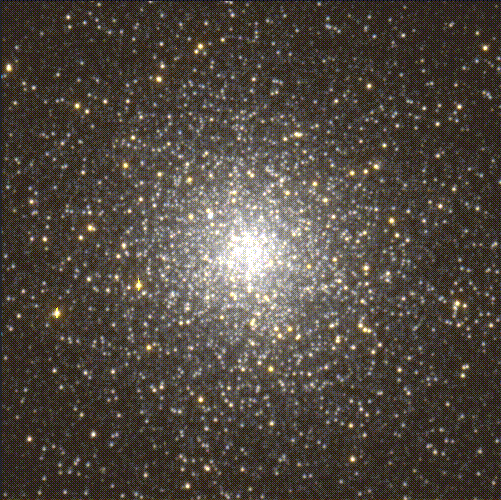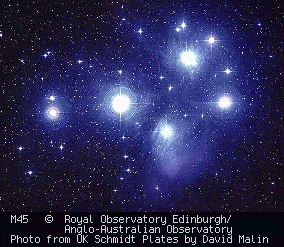| 47 Tuc |
|
|
|
M45 |
|
|
| Star Number |
Magnitude |
Color (B-V) |
|
Star Number |
Magnitude |
Color (B-V) |
| 10012 |
19.6 |
0.76 |
|
133 |
14.4 |
1.28 |
| 10170 |
20.6 |
0.98 |
|
165 |
7.6 |
0.12 |
| 10200 |
21.0 |
1.05 |
|
345 |
11.6 |
0.84 |
| 10206 |
21.0 |
0.96 |
|
522 |
11.9 |
0.90 |
| 10278 |
21.6 |
1.23 |
|
697 |
8.6 |
0.35 |
| 10335 |
22.0 |
1.31 |
|
804 |
7.9 |
0.20 |
| 10359 |
22.2 |
1.23 |
|
950 |
4.2 |
-0.10 |
| 10489 |
22.6 |
1.33 |
|
1040 |
15.8 |
1.44 |
| 10610 |
23.0 |
1.45 |
|
1103 |
14.8 |
1.47 |
| 20028 |
17.6 |
0.53 |
|
1234 |
6.8 |
0.02 |
| 20034 |
17.7 |
0.58 |
|
1266 |
8.3 |
0.36 |
| 20049 |
18.0 |
0.57 |
|
1305 |
13.5 |
1.18 |
| 20070 |
18.4 |
0.60 |
|
1309 |
9.5 |
0.47 |
| 20104 |
18.8 |
0.65 |
|
1355 |
14.0 |
1.23 |
| 20130 |
19.1 |
0.69 |
|
1432 |
2.9 |
-0.09 |
| 20185 |
19.8 |
0.83 |
|
1454 |
12.8 |
1.16 |
| 20210 |
20.1 |
0.88 |
|
1516 |
14.0 |
1.31 |
| 20239 |
20.4 |
0.93 |
|
1766 |
9.1 |
0.47 |
| 20335 |
21.4 |
1.10 |
|
1797 |
10.1 |
0.56 |
| 20364 |
21.6 |
1.20 |
|
1924 |
10.3 |
0.62 |
| 30014 |
13.5 |
1.10 |
|
2168 |
3.6 |
-0.08 |
| 30103 |
15.5 |
0.82 |
|
2181 |
5.1 |
-0.08 |
| 40002 |
12.0 |
1.45 |
|
2209 |
14.4 |
1.47 |
| 40022 |
12.6 |
1.25 |
|
2406 |
11.1 |
0.76 |
| 40043 |
12.9 |
1.14 |
|
2425 |
6.2 |
-0.05 |
| 40130 |
14.0 |
0.99 |
|
2588 |
13.1 |
1.22 |
| 40135 |
14.0 |
0.69 |
|
2601 |
15.0 |
1.55 |
| 40144 |
14.0 |
0.79 |
|
2655 |
15.5 |
1.36 |
| 40164 |
14.0 |
0.59 |
|
2870 |
12.5 |
1.07 |
| 40351 |
14.9 |
0.85 |
|
2881 |
11.8 |
0.86 |
| 40628 |
16.2 |
0.73 |
|
|
|
|
| 40821 |
16.6 |
0.73 |
|
|
|
|
| 41051 |
16.9 |
0.70 |
|
|
|
|
| 41107 |
17.0 |
0.58 |
|
|
|
|
| 41456 |
17.2 |
0.51 |
|
|
|
|
|
Spectral
Type |
Lifetime
(years) |
| O |
< 106 |
| B |
3 X 107 |
| A |
4 X 108 |
| F |
4 X 109 |
| G |
1 X 1010 |
| K |
6 X 1010 |
| M |
>1011 |
|


